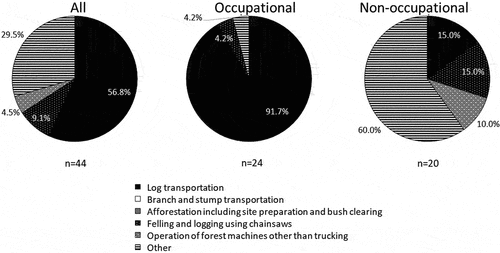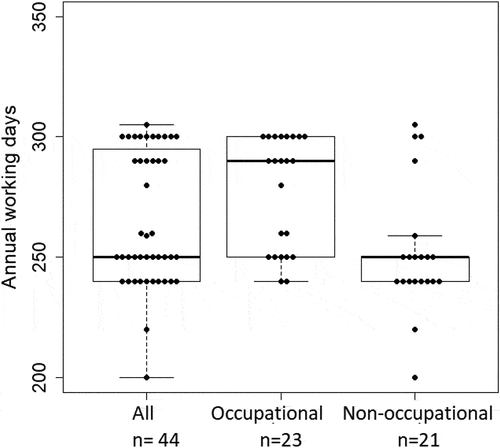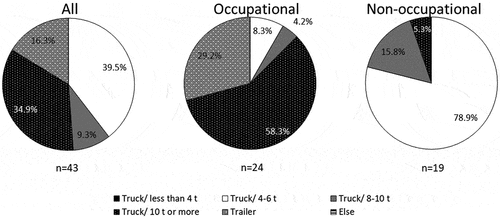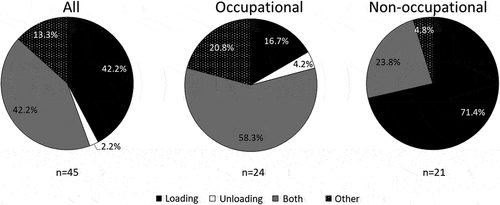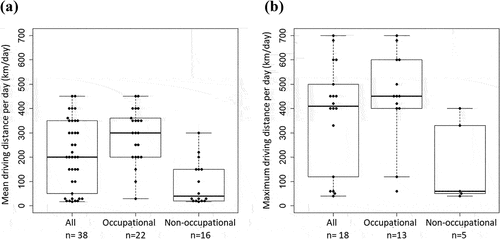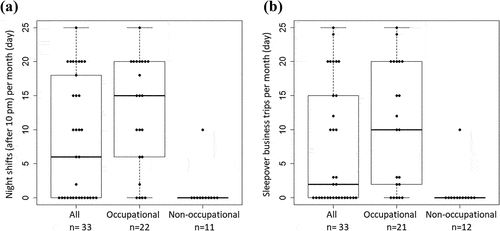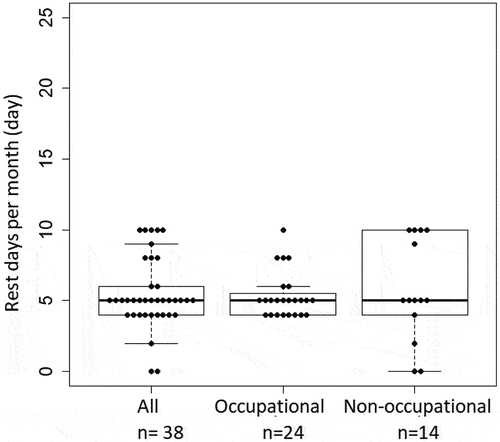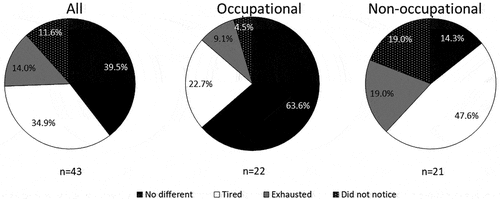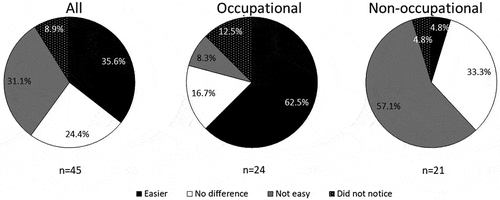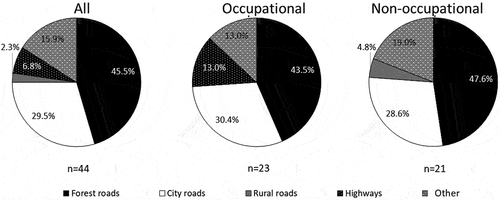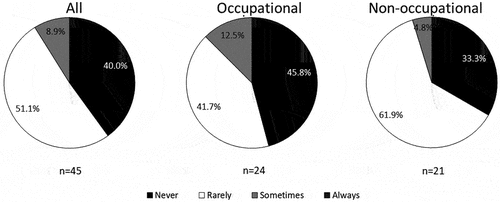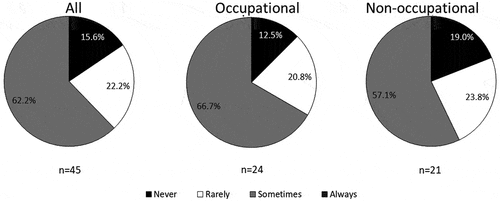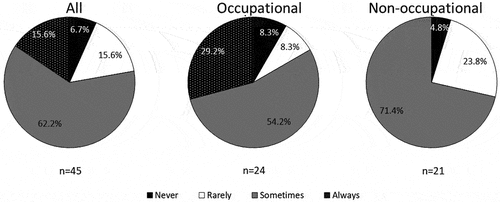Figures & data
Figure 2. The truck and truck/trailer combinations typically used in Japan (photographs by Y Chinone). A truck (ISUZU) with a maximum load capacity of 3.5 t (A), a truck (Mitsubishi Fuso) with a maximum load capacity of 6 t with a grapple loader (B), a truck (ISUZU) with a maximum load capacity of 10 t (C), and a truck/trailer combination (HINO) with a maximum load capacity of 20 t (D).
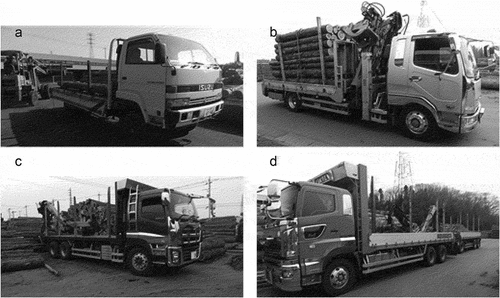
Figure 7. Main job with which drivers were engaged at their company. Multiple answers are included in other.
